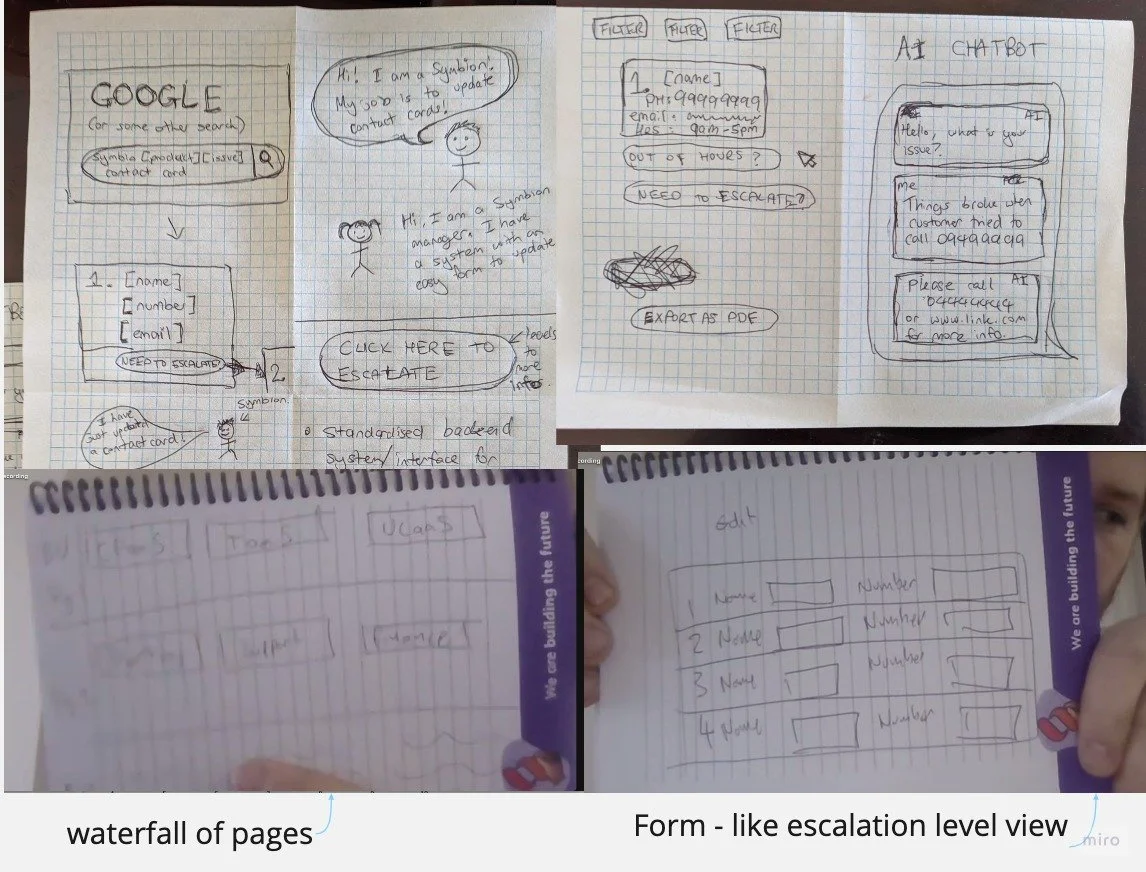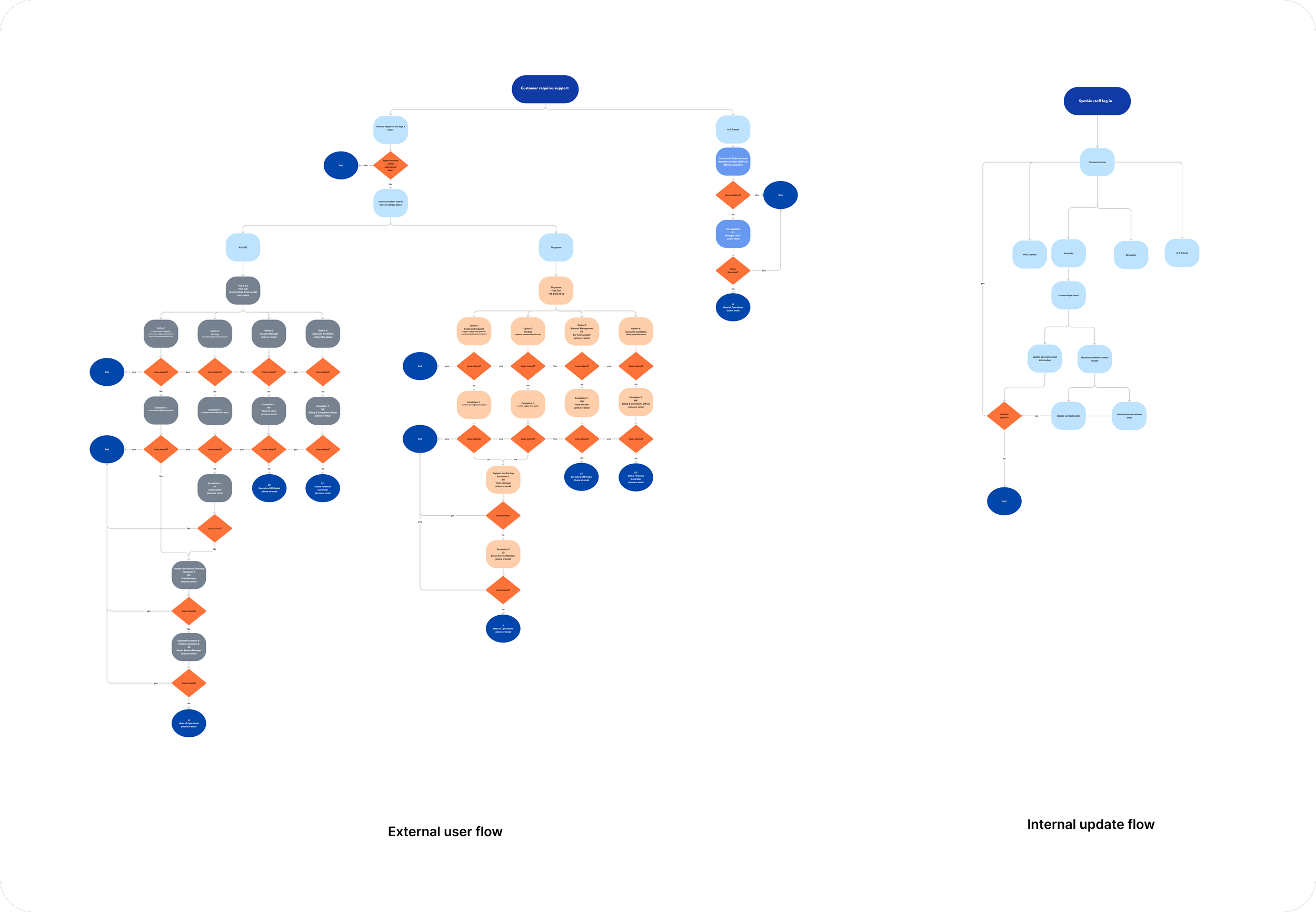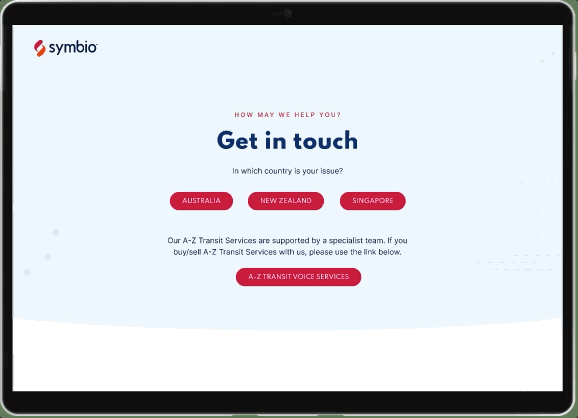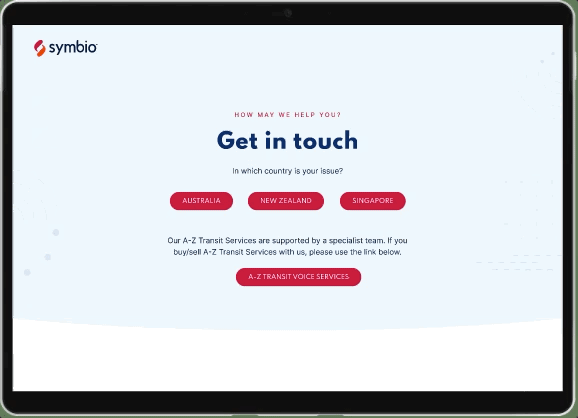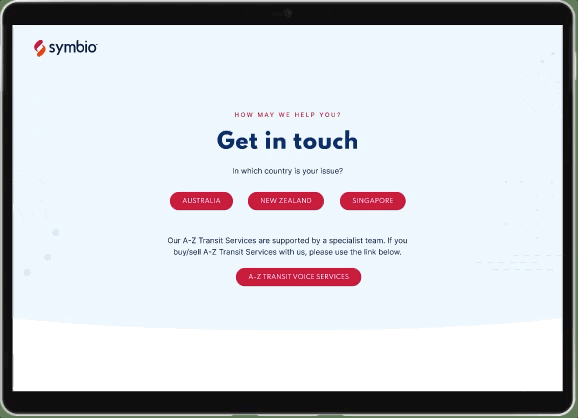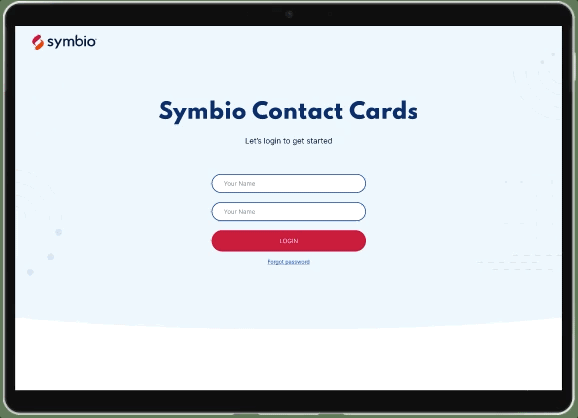Overview
Symbio is an ASX-listed B2B tech company delivering cloud communication in Asia-Pacific. The company services telecommunication and IT resellers range from 1 or 2 “man band” type businesses to global IT companies and telcos.
Due to Symbio’s complex product offering, customers need an effective way to reach the right support. They can do so by checking a contact card which is saved as a PDF document and hosted online.
However, the contact card is not a dynamic digital product and would need to be updated whenever there’s an update in contact, criteria and policy. The plain view of the escalation matrix can also entice customers to skip the protocol and go straight to the top level of escalation contacts, undermining Symbio’s internal processes.
Design a product that meets the overarching criteria of internal stakeholders including sales, marketing and operations;
Design a product that direct Symbio customers to the right support efficiently and serve the needs of different customers.
Objective
My role: UX/ UI Designer
Duration: 3 weeks
Discover the problem
Based on the client biref we created a problem statement to sum up the pain points we aim to solve.
Problem Statement #1
Symbio team members are frustrated that support for their customers is incorrectly diverted, causing internal team issues, and customer delays, and want to help their customers resolve support issues in a timely manner, but lack an efficient Contact Cards process across Symbio.
Our first round of research focused on finding out how things work and what the problems are. We looked into the current contact cards and support materials, conducted competitive analysis and desktop research to understand the business context and available solutions.
We initially thought we were going to redesign the whole customer service process, thus we looked into some of the best practices of customer service including a knowledge base, chatbot function and the ticketing system. However, after clarifying with the Symbio team, our main task was to improve the current contact card process.
Due to the confidentiality of the project, we can’t speak to the customers directly, to make up for this, we interviewed 12 Symbio employees who interact with customers on a daily basis.
And it became clear that we need to pivot our focus so we changed our problem statement to
Final Problem Statement
Time-poor Symbio customers escalate urgent issues without following the escalation matrix due to unclear criteria and an overabundance of information on contact cards & need an easily navigable, clear and up to date contact card to reach out to the right person to resolve problems efficiently.
Define major focus areas
We collated the data from our research and interviews and synthesized them in an affinity map to pin point the major areas and issues to focus on.
12/12
Interviewees mentioned the importance of transparency & trust
9/12
Interviewees stessed the contact card needs to be simple
8/12
Interviewees indicated customer skipped the escalation path due to current layout and it needed to be clear with less clutter
6/12
Interviewees highlighted the issues of customers printing, saving or storing the contact cards rendering them out of date
Major areas to focus on
Too much information on the contact card makes it hard to digest and causes a lot of confusion for the customer.
The contact card is not always up to date as customers either print and stroe the document or go into their CRM and grab the number.
There’re various versions that exist depending on who their account manager is for the customer.
Trust and relationships are vital for the customer and this translates to ensuring transparency on the contact card.
We also found out when the customer have an issue they tend to reach out directly to their peer manager in Symbio due to a lack of understanding of the contact cards itself and the escalation process.
Develop solutions
Concept ideation with Furious 4’s
To generate ideas we held an ideation session with 8 participants focusing on 3 key How Might We (HMW):
How might we ensure the contact card is always up-to-date?
How might we simplify the contact cards so they are clear and concise?
How might we ensure the customer trust the escalation path?
Impact-effort matrix
Based on the Impact-effort matrix, we prioritised the features for the minimum viable product (MVP) :
Digitize the contact card in a portal;
Form / button style waterfall process for defining escalation level
Easily accessible & single reference point for the customer
Single reference point for Symbio to update card
In the process we also realized a successful customer-facing contact portal couldn’t be guaranteed without providing an internal solution to update the card easily.
So we decided to design two portals and mapped out both external customer flow and internal update flow.
UI Design and Iterations
For the external customer facing contact portal, we created low fidelity wireframes and mid to high fidelity prototype and conducted 2 rounds of usability testing, including 3 with Symbio customers.
1st round : 3/5 thought the escalation button should be moved up
“Escalate was difficult to find as I didn’t scroll at first … it needs to be moved up”
2nd round: 2/2 still found the escalation button not obvious enough
"The escalate button is a bit hidden, it didn't sort of pop"
We made a few changes to ensure the escalation button was found easily. The page size was reduced so everything is viewable above the fold.
1st round: 3/5 found it easy to navigate but a bit hidden
“It was easy, but several clicks to get into it”
2nd round: 2/2 wanted to do more with the save function
“Can I export the entire contact cards? One button so that I can download it all.”
1/2 found the escalation criteria down the bottom repetitive
The proceed step was removed to simplify the process.
The escalation process explanation was remvoed as well.
An export all contacts button was added.
Final Product
1.Customer facing contact portal
Simple & Clear
With a clear flow within only a few clicks the customer can be directed to the contact point for their specific issues and seeing only one level at a time allows the customer to clearly see what contact details or escalation is required.
Always up-to-date
One simple access point for all the contact information; The customer still have the option to save or copy them into their CRM system but automated emails will alert him when changes have been made.
Transparency & Trust
The escalation matrix is transparent for the customer to refer to at all stages and with the customer using the correct escalation stages, trust will be built in the process.
2. Internal update portal
Scalability & Flexibility
One single reference point that can be saved and shared from multi places. Authorized managers can take ownership of their cards and keep them up to date easily. And as Symbio grows, the solution can be easily expanded as needed across business units and countries.
“You have fearlessly seized this seemingly unsolvable challenge of redesigning our global escalation matrix and delivered an outcome that is applauded by all the key stakeholders.
The robust user research to understand the crux of the problem and testing possible design ideas with real customers speak volumes to the final product design. ”
Next steps
Full Service Level Agreement (SLA) descriptions for each product and further usability testing with final iterations where applicable;
Concept testing the idea of a move to internal decentralised identifiers (DID) to further improve the adaptability and expandability of the cards into the future;
Placement and connecting with the customer portal currently being designed;
Internal matrix mapped for all contacts and customers to connect the portal and internal updating system.
Produce KPI’s and metrics around number of escalations that skip protocol, customer satisfaction and customer feedback on contact card use to assess efficacy.
Move to Customer Experience Design around level 1 escalation to embed continuity and trust in escalation protocol.
Reflections
Define the scope before diving into research - We initially thought we were going to redesign the whole customer service process, thus we spent a lot of time researching on some of the best practices of customer service including a knowledge base, chatbot function and the ticketing system. However, our main task was to improve the current contact card process, thus we should look into the specific area further.
Balance both user and business needs - When redesigning the contact cards, we had to factor in various opinions from different stakeholders. While it’s still important to put the users’ needs and wants at the forefront, weighing in business needs and constrains is also important.


